(It is in English, BTW!)


Friday, October 24, 2014
Marijuana History 101 (US Government Lies & Deceit)
Watch, learn the truth and educate yourself about the history of Cannabis and the lies and deceit use by our governmental leaders to make and keep the most beneficial (to mankind) plant ever, illegal! (Hint: think Big Pharmacy and HUGE profits!)
(It is in English, BTW!)
(It is in English, BTW!)
Sunday, October 19, 2014
Top 10 Foods to Lower Cholesterol
Almonds 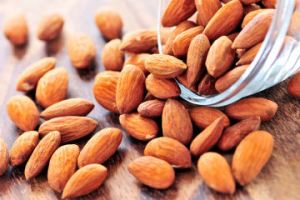
Almonds are pretty hardworking nuts when it comes to lowering your cholesterol. First, they’re rich in unsaturated fats that help raise healthy HDL cholesterol while lowering unhealthy LDL. Second, these fats also help make LDL cholesterol less likely to oxidize. This is a fabulous thing, because when LDL oxidizes, it’s more likely to gunk up your arteries and cut blood flow to the heart. Snack away. But do keep an eye on portion size. Almonds are high in calories, and all you need are a couple of ounces a day to reap benefits.
 Orange Juice
Orange Juice
OJ manufacturers are doing everything they can to make their health food more appealing — including fortifying their juice with plant-derived cholesterol-busting compounds known as phytosterols. A review of 84 scientific studies revealed that getting 2 grams of phytosterols a day – the amount in a couple 8-ounce glasses of sterol-fortified OJ — could help lower harmful LDL levels by more than 8 percent. Check with your doctor first regarding whether citrus will interact with any of your medications. If it does, look for sterol-fortified margarine, milk, soymilk, cheese or breads instead.
Olive Oil 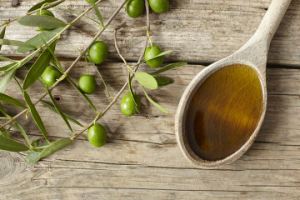
This oil is a nutritional superstar — rich in antioxidants and heart-healthy monounsaturated fats that help lower “bad” LDL cholesterol and increase “good” HDL. In fact, in a study of people with high cholesterol, blood samples showed less potential for harmful clotting just two hours after the study subjects ate a meal with olive oil. That’s because olive oil is rich in phenolics, plant substances that makes blood less likely to clot. All you need is about 2 tablespoons a day for benefit (use it in place of other fats).
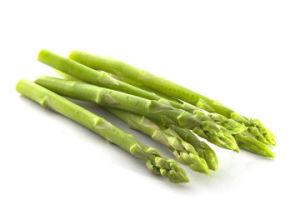 Steamed Asparagus
Steamed Asparagus
There’s nothing wrong with a platter of crudités or a salad if you want to improve your diet, but steaming may help improve the cholesterol-lowering capabilities of some produce, including asparagus. Other veggies that get better after a short bout in the steam: beets, okra, carrots, eggplant, green beans and cauliflower. Researchers think steaming these veggies may help them do a better job of binding bile acids, which means your liver needs to use up more LDL cholesterol into order to make bile. That translates into less circulating LDL in your bloodstream.
Oatmeal 
Your mama was right. Starting the day with a bowl of warm, toasty oatmeal is a smart move. Of all the whole grains, oats are the best source of soluble fiber — the kind that forms a gel to prevent cholesterol from being absorbed into your bloodstream. Shoot for five to 10 grams of soluble fiber per day. If you have 1¼ cups of cooked oatmeal for breakfast, you’ll start your day with 5 grams of the stuff. Top your oatmeal with a chopped-up apple for an extra 3 grams of fiber, and you’re set.
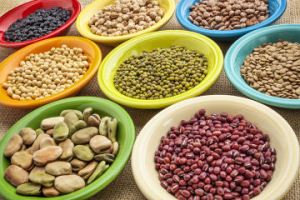 Pinto Beans
Pinto Beans
Next time you make chili, add pinto beans to the pot. They’re packed with soluble fiber to help drive down cholesterol. And in a study, people who ate a half-cup of pinto beans a day lowered their total cholesterol by 8 percent in just 12 weeks. Ole! (Tip: If you use canned beans, rinse them to wash away excess sodium.)
Blueberries 
You’ve heard by now that blueberries are a nutritious superfood. One reason they’re so great? They help keep your arteries clear by reducing blood levels of artery-clogging LDL. Researchers suspect it’s because the berries support liver function so well. The end result: cholesterol gets swept out of your system much more easily. Enjoy blueberries fresh, frozen or freeze-dried. They still have the same benefits.
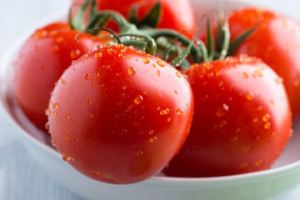 Tomatoes
Tomatoes
Include lycopene-rich tomato products in your diet every day for a few weeks, and you may knock your bad LDL cholesterol levels down by as much as 10 percent, according to a recent study. Researchers think the lycopene in tomatoes inhibits LDL production while at the same time helping break down this artery-clogging fat. You’ll need to consume at least 25 milligrams of lycopene a day for cholesterol benefits. That’s about a half cup of tomato sauce. Bring on the marinara!
Avocados 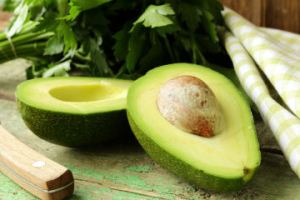
Every kitchen should be stocked with ripe avocados. Why? They’re chock-full of heart-healthy monounsaturated fats that help knock down bad LDL cholesterol and triglycerides while boosting healthy HDL cholesterol. Even better, you’ll love the fruit’s (yep, it’s a fruit) mild flavor and creamy texture. Mash avocado into guacamole, add slices to a sandwich, chop it up in a salad or — for a tasty snack — simply spread a little on whole-grain crackers with a tiny pinch of coarse sea salt.
 Chocolate
Chocolate
If you’re a chocoholic, here’s some good news. Study after study confirms dark chocolate is pretty amazing, healthy stuff. It’s full of flavonoids, which are antioxidants that help lower cholesterol. It also has oleic acid, the same type of heart-healthy monounsaturated fat found in olive oil. To improve your cholesterol, just have a little nibble — up to 1 ounce of dark chocolate a day. And check the label to make sure your chocolate is at least 70 percent cocoa. Cocoa is the stuff with all the heart-healthy ingredients.
The Type of Food that Will Slow Nearly EVERY Inflammatory Disease
Boosting Your Enzyme Levels Naturally
There are four ways to naturally increase your enzyme levels:
- Increase your intake of raw, living foods
- Eat fewer calories
- Chew your food thoroughly
- Avoid chewing gum
The very best way to get enzymes into your body is by consuming at least 75 percent of your foods raw. For many of you, you'll have to work toward this goal gradually.While all raw foods contain enzymes, the most powerful enzyme-rich foods are those that are sprouted (seeds and legumes). Sprouting increases the enzyme content in these foods tremendously. Besides sprouts, other enzyme-rich foods include:
- Papaya, pineapple, mango, kiwi, and grapes
- Avocado
- Raw honey (the enzymes actually come from the bee's saliva)
- Bee pollen
- Extra virgin olive oil and coconut oil
- Raw meat and dairy
The best way to bump up your metabolic enzymes is to provide your body with the raw materials and energy it needs to make them. By eating these types of foods, you supply your body with the amino acids and the enzyme co-factors needed to boost your own natural enzyme production.Another way to lower your body's demand for enzymes is to reduce your caloric intake. Did you know the average person spends 80 percent of his available energy simply digesting food?By reducing overall consumption, as well as introducing more living foods, you reduce your need for digestive enzymes, which allows your body to put more of its energy into producing metabolic enzymes.Which brings us to chewing. Quite apart from the esthetic pleasure of an unhurried meal, there are important physiological reasons to chew your food well.Chewing stimulates saliva production, and the more time you spend chewing, the longer your saliva enzymes have to work in your mouth, lessening the workload of your stomach and small intestine. Chewing also stimulates a reflex that sends a message to your pancreas and other digestive organs, "Gear up—we've got incoming!"And don't chew gum.Chewing gum fools your body into believing it is digesting something, so it pumps out digestive enzymes unnecessarily. Why waste those precious resources?
Digestive Enzyme Supplementation
If you suffer from occasional bloating, minor abdominal discomfort, and occasional constipation and suspect your enzyme production is low, you might want to consider a digestive enzyme supplement in addition to eating more of your foods raw.Digestive enzymes should be taken WITH a meal. There are hundreds on the market, so how do you choose a good one? You should look for an enzyme formula with the following characteristics:
- It should contain a mixture of different types of enzymes, to help digest all of the different components of your diet (including lipase, protease, and amylase)
- The ingredients should be high quality, all-natural, and free of allergens and additives
- The supplement should be labeled as to the enzymatic strength of each ingredient, not just its weight
- It should be made by a reputable company with rigorous quality control and testing for potency
Besides digestive enzyme supplementation, there is another way to use oral enzymes—for systemic use. This requires taking enzymes between meals so they can be absorbed through your gut and into your bloodstream, where your cells can use them metabolically.
It is VERY important that you click on the Mercola logo at the beginning of this article for the FULL report on this very important issue.
Subscribe to:
Comments (Atom)

